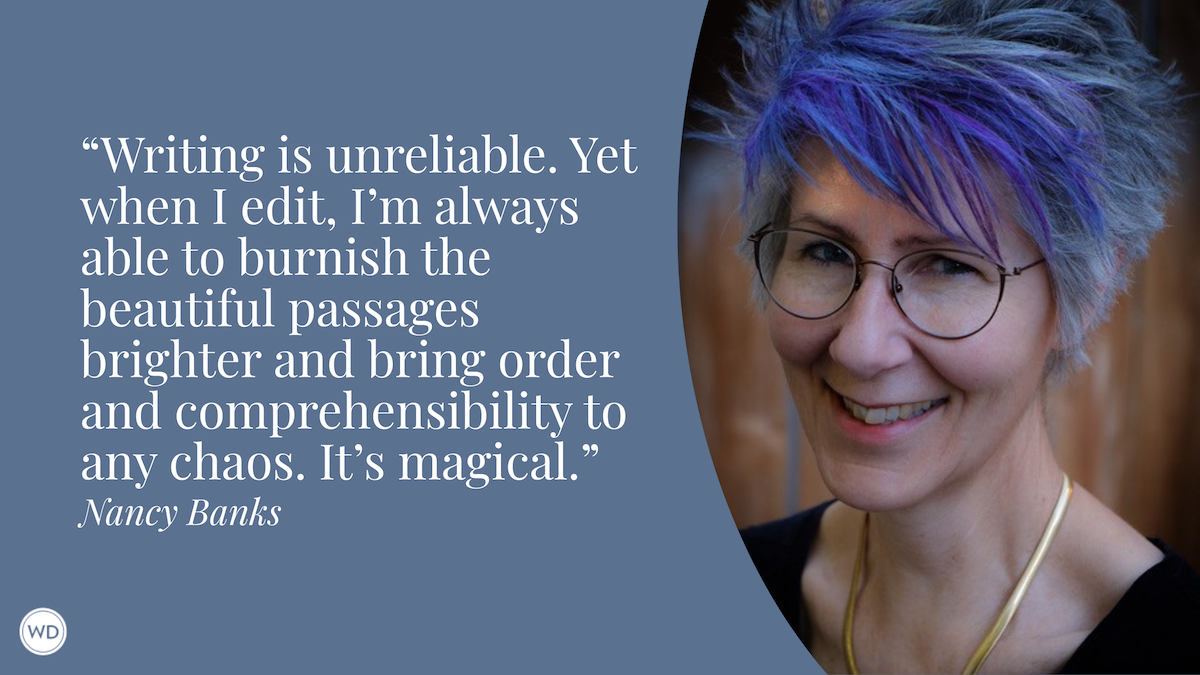How to Plot a Plot Twist: 5 Steps to Writing a Satisfying Switch Up
Author Laura Leffler shares how to plot a plot twist by revealing her five steps to writing a satisfying switch up.
Back when I was a pantser, pulling off a plot twist was the furthest thing from my mind. I was just trying to pull off a plot, full stop. I had a premise—basically, a character with a problem—and spent the next 80,000 or so words finding out what happened. Spoiler alert: What happened was two failed manuscripts.
Instead of giving up, I decided to change how I approached writing. I renamed my failed manuscripts exploratory drafts and built the scaffolding of a crime novel to hold them up. The crime was surprisingly easy to incorporate into my otherwise upmarket novel. But to have a good crime or thriller, I needed some plot twists, too. Those were a bit harder to suss out, and took a lot of trial and error.
I’m going to save you some “exploratory drafts” with my five steps to sticking a plot twist.
STEP 1: BRAINSTORM YOUR TWIST
A good twist does not exist in a vacuum. It serves its plot. It isn’t there only to surprise the reader—it also needs to add a layer to your story.
To achieve this, start by considering your genre. What typically happens in novels like yours? What preconceived ideas will your readers bring to the book? What expectations will your audience have?
Now, think about your story in particular. What is unique about your characters, your setting, or your themes? How could these things interact with your genre’s conventions? Where is the overlap? Is there any way can you use the unique parts of your story to disrupt the conventions of your genre?
For instance, say you are writing a crime novel about a serial killer. You’d want to think about what serial killer tropes are common—the lone male criminal genius, for instance, with some twisted sexual motivation or satanic drive pushing him to kill. Your question should be: How can I flip that expectation on its head? Your answer—one of many—may be: I will make the killer an old woman.
STEP 2: FORM A PLAN
We aren’t talking about a premise here, though; we aren’t talking about a set-up, or anything that can be given away on the flap-copy. A twist requires that you subvert expectations in media res, which is trickier than nailing a hook.
It doesn’t matter if you’re a pantser or a plotter—to make the twist land in a satisfying way, you must make a plan. If you’re a pantser, the twist will probably come to you while you’re writing an exploratory draft. If you’re a plotter, it will come while you’re outlining. Either way, once you know what your twist is, you must consider where to put it. Is it a shift in perspective that changes everything? Maybe it’s the midpoint. Is it the solution to a mystery? Try it as the climax.
Rule of thumb: To give the twist maximum effect, withhold as long as you can.
STEP 3: LEAVE BREADCRUMBS
The best twists are those that readers call “surprising but inevitable.” This means that the twist cannot be something totally out of the blue. Nor can you outright lie to your reader. That feels like cheating. You, as an author, are in a partnership with your reader. You are playing a game with them, and if they suspect you’re cheating, they won’t play with you again.
In order to avoid such a misstep, you must know your twist at page one. Whether you’ve written 80,000 words to find your twist or have a detailed outline, you must make sure that the rest of the story adds up. Every line that comes before the twist has to work with the twist.
The answers, in other words, must all be hidden on the page.
STEP 4: MISDIRECT
You cannot lie, but you must manipulate your reader. Think misdirection. Think distraction. Think magic. You must draw attention to one hand, while the other hand does the dirty work.
On an early episode of The Shit No One Tells You About Writing podcast, host Bianca Marais asked thriller writer Jeffrey Archer about misdirection. He gave away his “great secret:” “When you drop that line,” he said, “that’s going to tell you everything, make the next line so startling, they forget it… that’s the game you play with the reader.”
This means revealing the truth in such an offhand way that the reader practically ignores it. Let a bomb explode directly after the question is answered. Or a car accident. Or a confession. Any such upheaval will pull the attention away from what you just revealed.
STEP 5: SANDBAG
Sandbagging is when you play below your skill level in order to dupe your opponent to betting more. If you can manage to get your reader to believe that she has figured it out, just long enough to feel full of herself for her ingenuity. Then, you pull the rug out.
Ta-da! Gotcha.
Check out Laura Leffler's Tell Them You Lied here:
(WD uses affiliate links)









